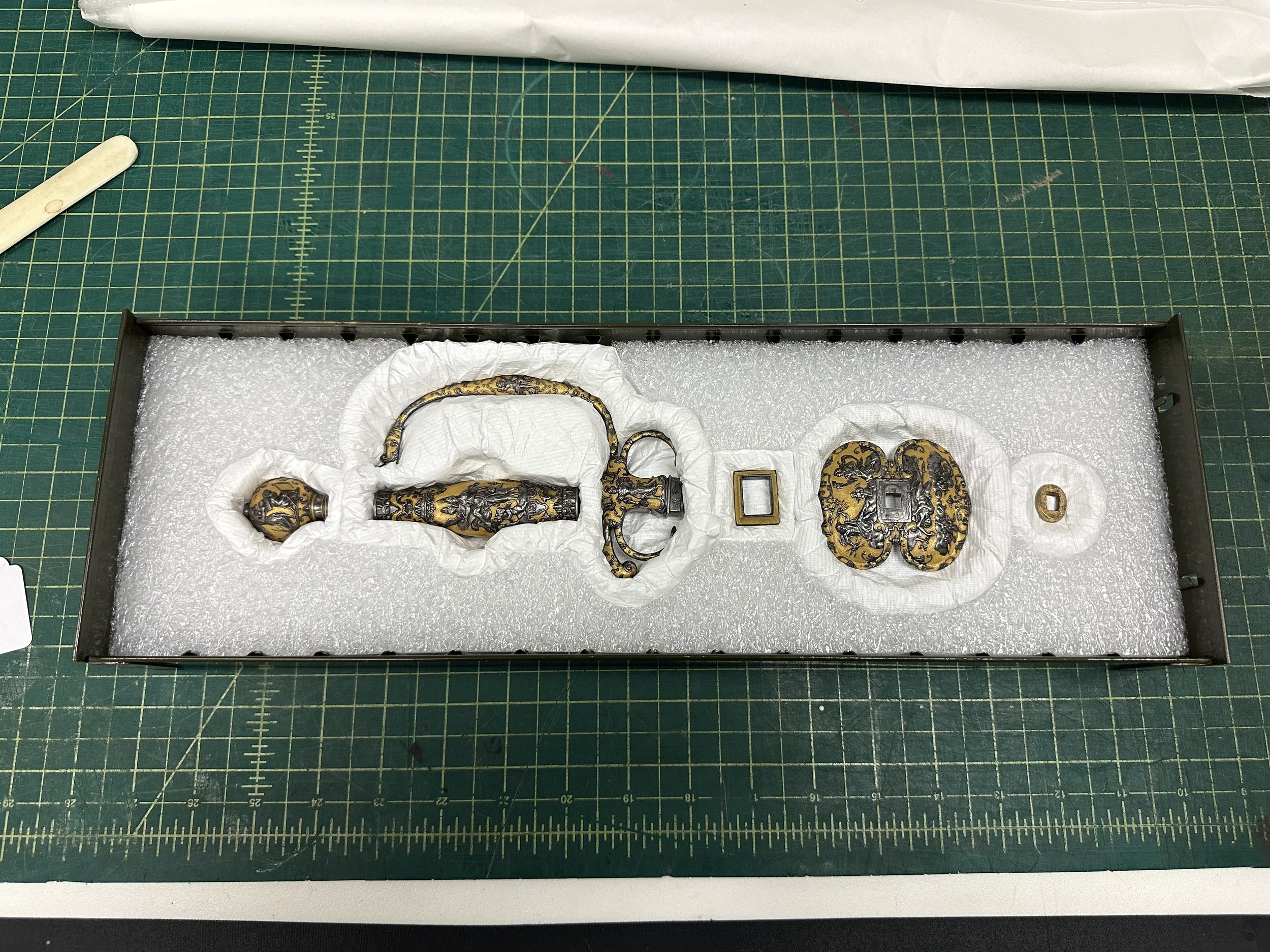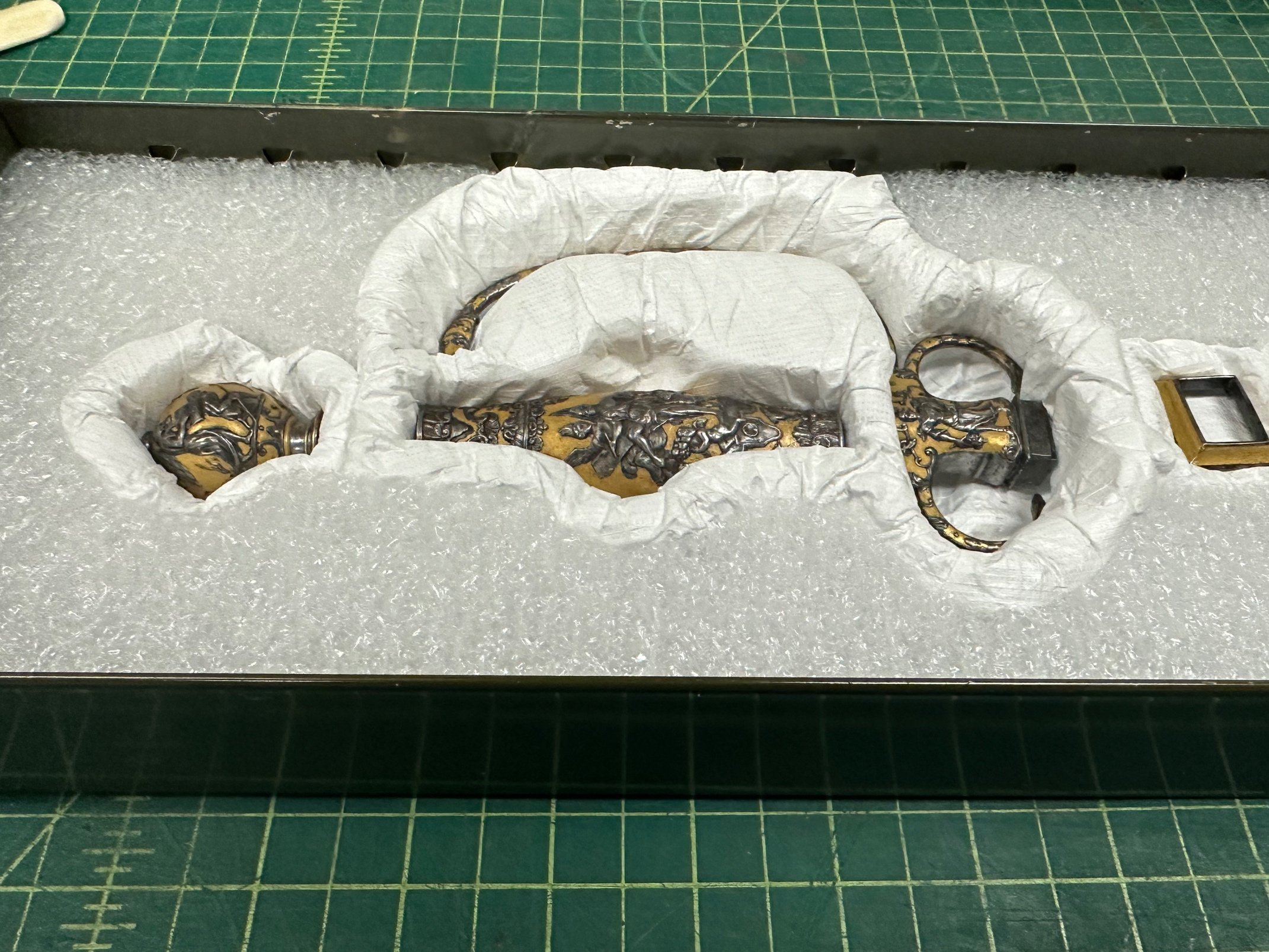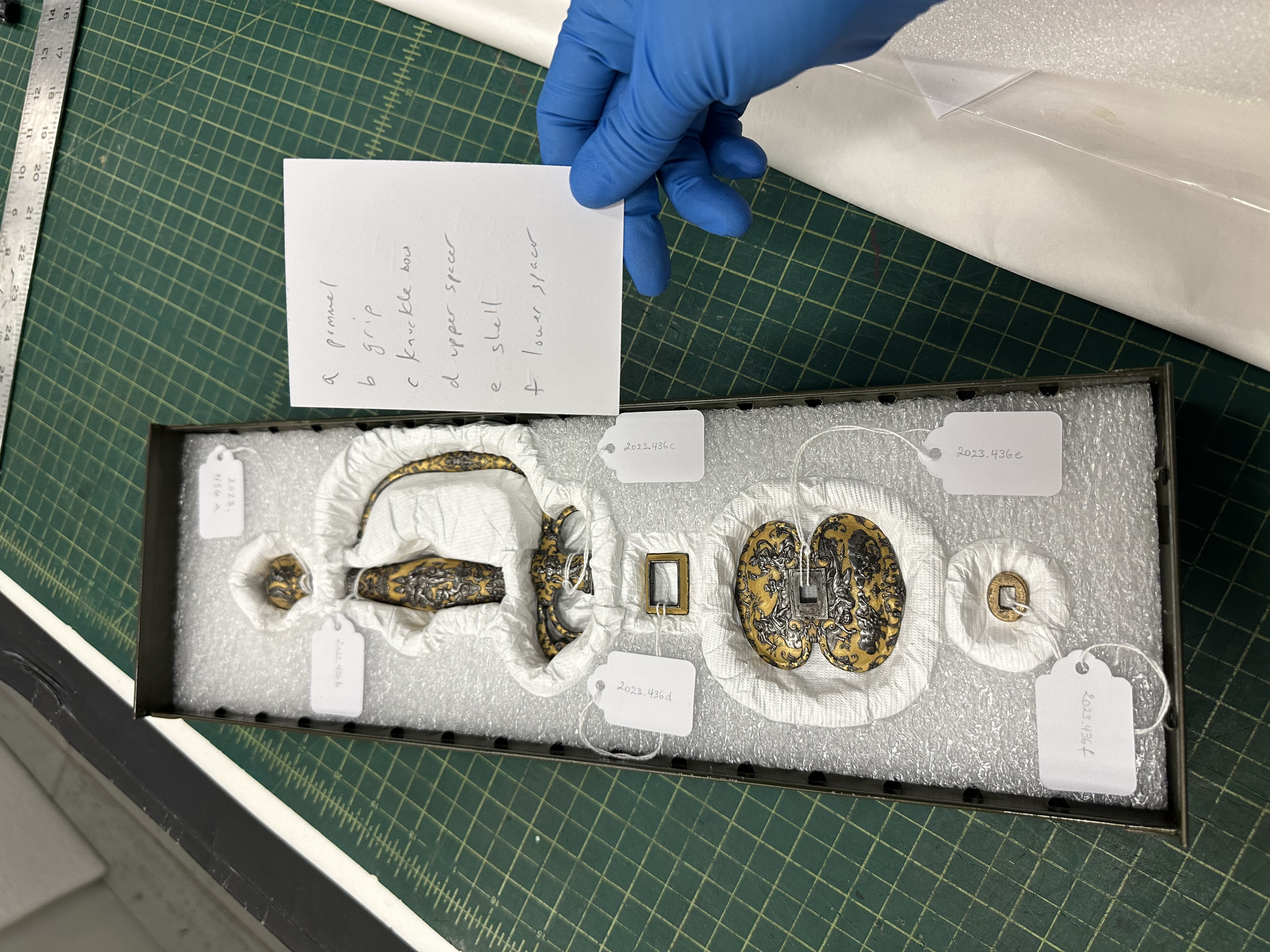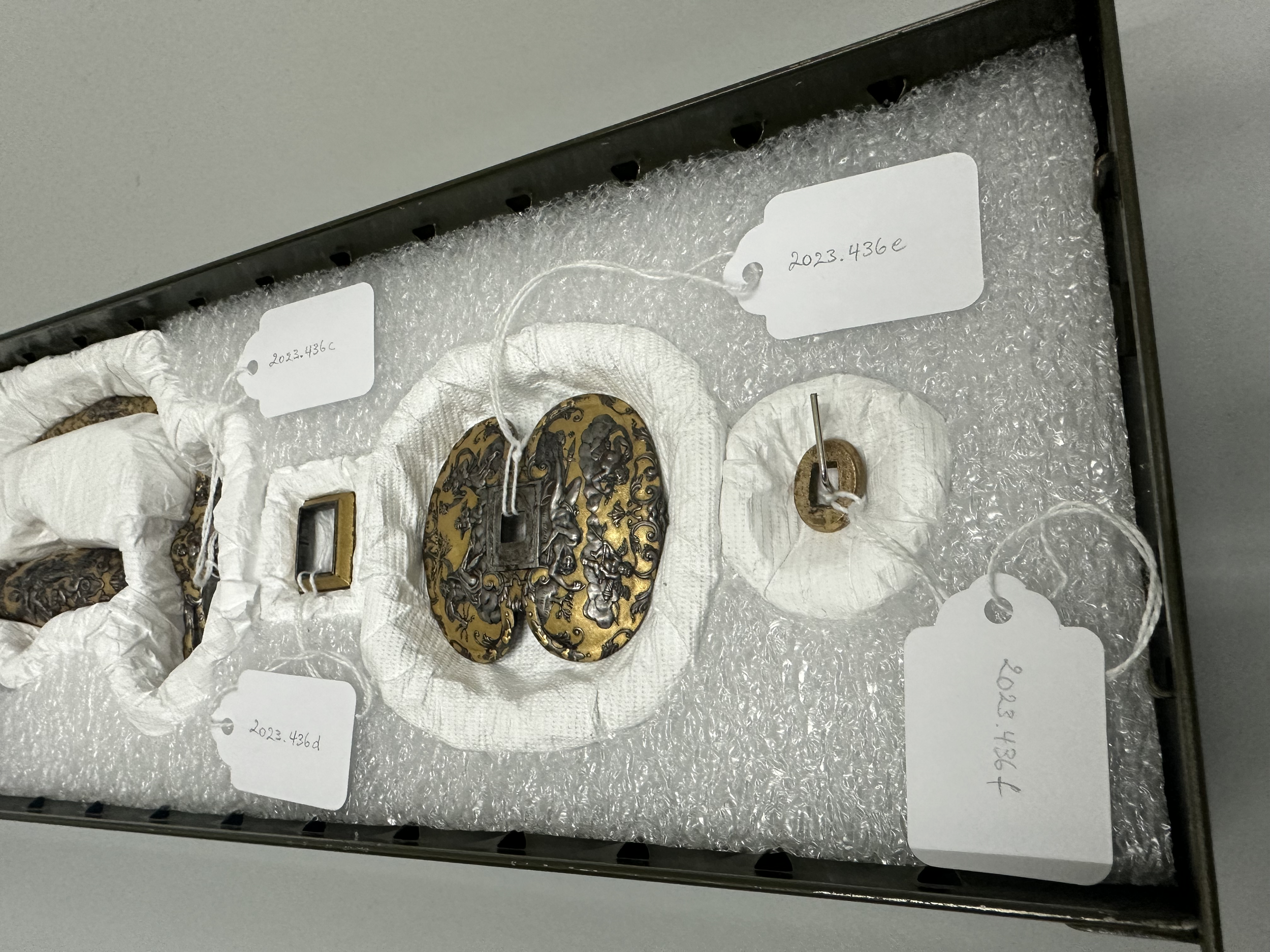Making a cavity packing drawer for sword fittings
Customized storage was needed for a set of beautifully decorated 18th C sword fittings (2023.436a-f) that was recently acquired by the Met’s Arms & Armor department, as these did not come assembled with a blade. A drawer in one of the storerooms was assigned to hold these, and I was assigned the task of creating the cavity packing for the items. To begin, I lined the bottom of the drawer with a thinner layer of Ethafoam, and cut a matching thicker layer of Ethafoam to go on top of it. I arranged the components on the latter to follow the order in which these fittings would be assembled if they had been fitted onto a blade, then traced their outlines, and set the items aside on a tray. Following the markings, I cut custom cavities for each object, making sure to add angles and/or finger holes for ease of object insertion/removal, and inside platforms for any items with a lower profile to keep them from sinking too deeply in the thick Ethafoam layer. I then lined each cavity with Tyvek sheets whose edges I tucked into outlining cuts in the foam, and rehoused the sword fittings (with a component-specific accession number on tags) into their new storage drawer, which was returned to their location in the storeroom.

Layout of the intended arrangement of components, with respective tags. (Photo: Jennifer Kim)

The storage drawer, lined with a base layer of Ethafoam. (Photo: Jennifer Kim)

Components fitted into their respective cavities. (Photo: Jennifer Kim)

Detail of pommel, grip, and knucklebow fitted into deep-set cavities. (Photo: Jennifer Kim)

Detail of upper spacer, shell guard, and lower spacer fitted into shallower cavities. (Photo: Jennifer Kim)

Final layout. (Photo: Jennifer Kim)

Checking the tags attached against the list of assigned component letters. (Photo: Jennifer Kim)

Detail of pin added to the lower spacer to further secure it in place. (Photo: Jennifer Kim)